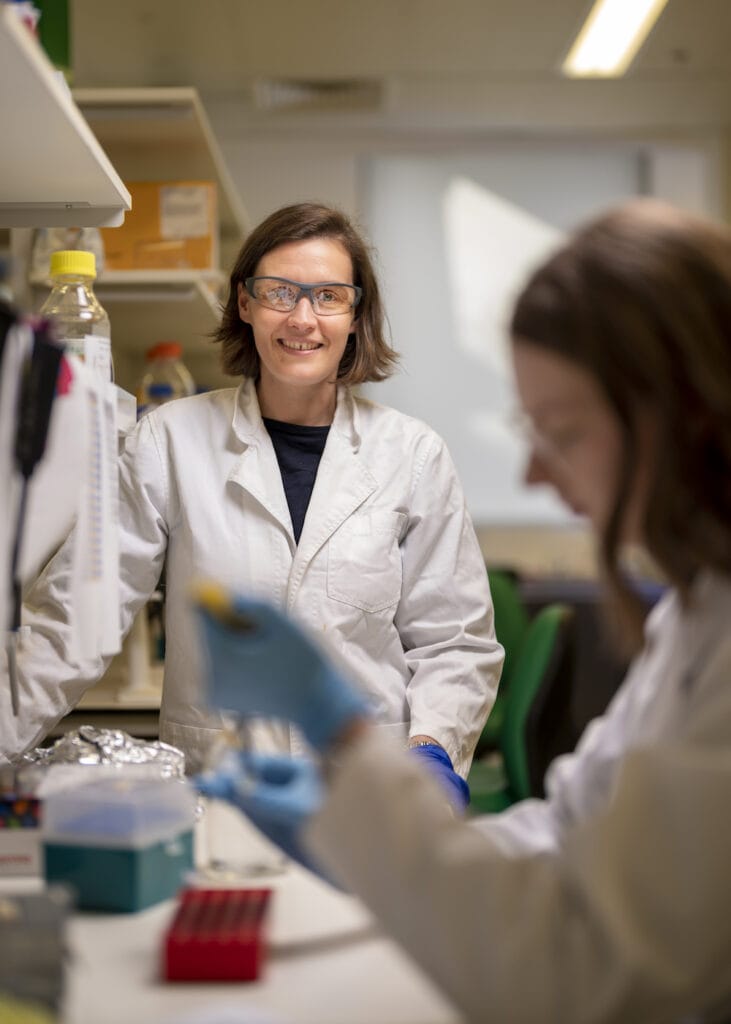What we can learn about our continent’s environment from space, in concert with land-based monitoring, is vitally important to observing, understanding and sustainably managing Australia’s natural and social capital. This month’s spotlight is on the Australian National University (ANU) Institute for Space, or InSpace.
Led by Director, Professor Anna Moore, InSpace’s work is aligned with the Australian Space Agency’s (ASA) priority themes to drive national action and its Earth Observation work includes space monitoring projects related to bushfires, drought and water technologies.
Space and bushfires
Since 2020, Australia has been investing more heavily in bushfire research and research infrastructure. For example, TERN is partnering with the ANU and Australian Government Department of Agriculture, Water and the Environment (DAWE) in a two-year ARDC Bushfire data challenge project to provide researchers, firefighters and planners with national fuel load data essential for modelling and prediction of bushfire behaviour.
ANU is conducting research across disciplines to better understand how fires are changing with our climate and how we can better utilise information from space to monitor and fight fires.
A collaboration between established bushfire risk management and space instrumentation programs at the ANU is leading to a bespoke satellite system for monitoring vegetation fuel conditions.
InSpace Mission Specialist, Associate Professor Marta Yebra, Director of the ANU Bushfire Initiative, is a distinguished remote sensing expert and a collaborator with TERN.
“Satellite data can play a major role in the management of bushfires. We currently get our satellite data from other nations, but a new Australian satellite mission called Oz Fuel will help detect fuel and moisture content of native Australian vegetation like eucalypts and help detect fire ignition events.
To better protect Australians from bushfires, we need data from Earth and space – to design systems that can monitor our continent.”
Assoc. Prof. Marta Yebra, ANU Institute for Space
Ozfuel will provide information about high fire risk areas and as such is a key element of a holistic solution to prevent catastrophic bushfires that the ANU Bushfire Initiative is trialling in the Australian Capital Territory.
The ANU Bushfire Initiative and partners, including Optus, are testing a multi layered integrated fire detection system to detect bushfires within a minute from the time they start. In conjunction, the ANU Bushfire Initiative is also developing a holistic approach to put small fires out within minutes of ignition and detection.
No single technology can do this. ANU researchers are planning to trial ground sensors and cameras in fire towers to monitor areas of high risk to complement satellite data. Drones can be used to both watch for fire and verify ignitions. Clever algorithms will compress data, archive and synthesise satellite imagery for better fire modelling. Low-cost, auto-piloted water gliders will achieve accurate and very rapid-fire suppression of small fires at any time of day or night and in all weather conditions.
Space and droughts
Extreme droughts are a well-known phenomenon in many parts of the world – their devastating impacts all too familiar on both humans and biodiversity. Some of the solutions to more efficient water use during long droughts might come from space research.
Space is a harsh environment that lacks the resources needed to propagate plants. The only available water and nutrient resources are the ones humans bring with them. This means space travellers need to be extremely efficient with using and recycling their limited resources so they can reuse everything to best effect.
InSpace Mission Specialist Dr Caitlin Byrt of the ANU Research School of Biology describes how her research is helping to tackle the problem of drought and water conservation.
“Recycling and reusing resources like water is something we need to improve on Earth to meet sustainability challenges and look after our planet. The technologies we are developing to help us recycle resources in space can also help us recycle resources on Earth, most notably water.”
Dr Caitlin Byrt, ANU Institute for Space

Right now, astronauts are already using membrane filters that contain aquaporins in space to extract clean water from astronaut wastewater. NASA developed this technology with a company based in Denmark called ‘Aquaporin’.
“Aquaporins are a type of protein present in all lifeforms. We study them because they can be used in filter technology to clean up dirty water, and they can help crops adapt to challenging environments like droughts or the environments in space where we want to grow plants.”
Dr Caitlin Byrt, ANU Institute for Space
Caitlin’s research team is building new components that can be used in similar ways to extract other valuable resources like nutrients from wastewater. That means nutrients currently being lost in waste can be used to grow plants.
The team also studies and engineers how plants use aquaporins to adjust to different environmental stresses. This can help inform how to engineer crops to cope with the environments in space.
There are living organisms on Earth that can withstand radiation and temperature extremes, not dissimilar to what is found in locations of interest in space. For example, there are types of bacteria that can live in hot radioactive springs. This indicates that there is potential for life to evolve and adapt to different extreme conditions.







